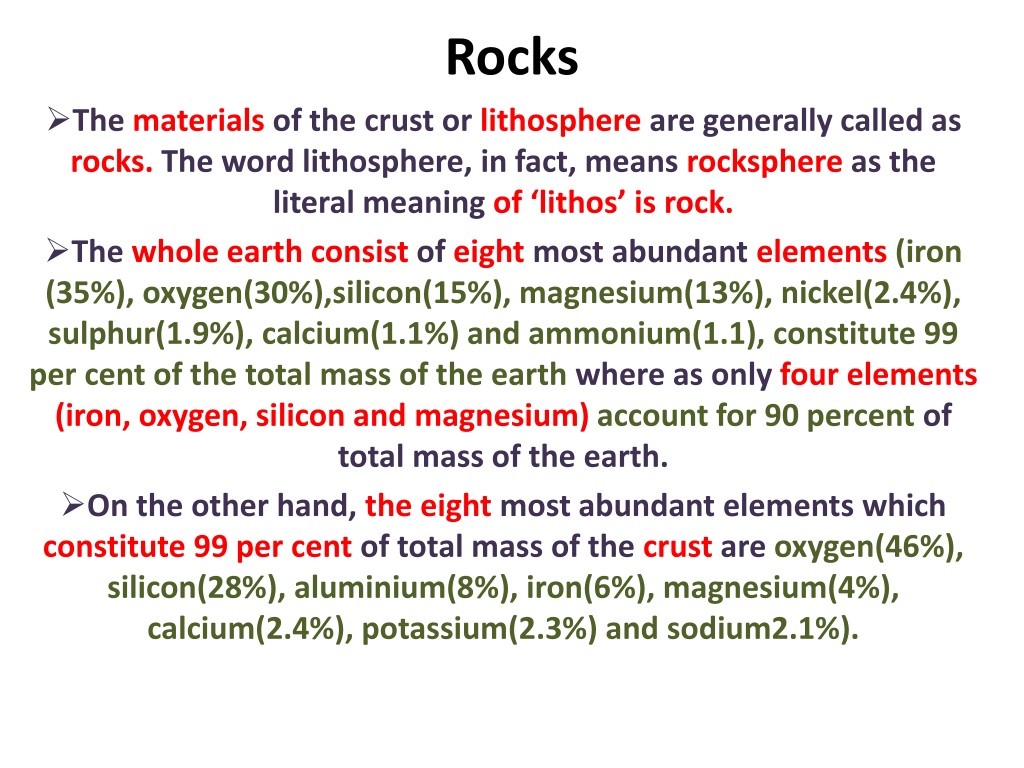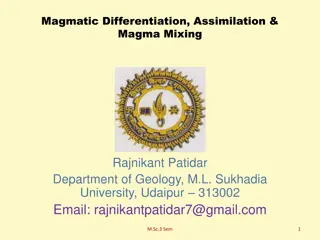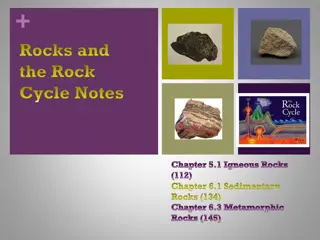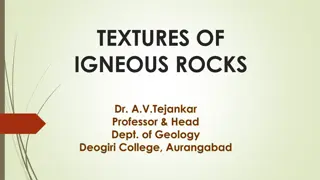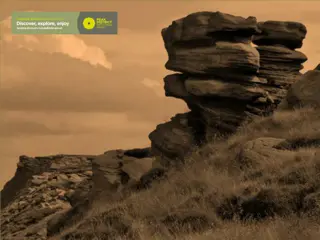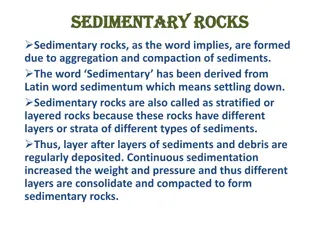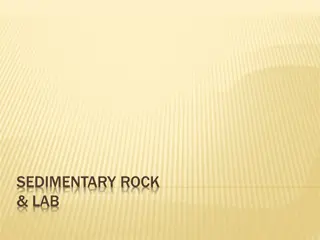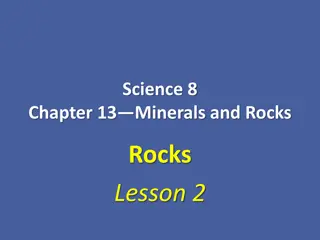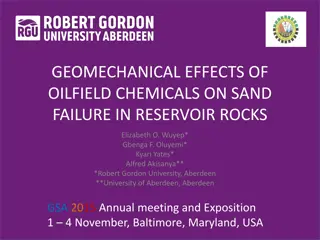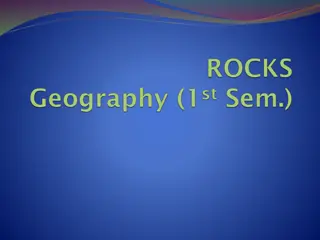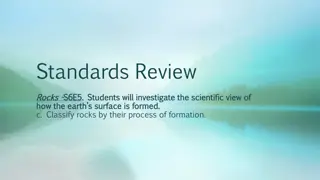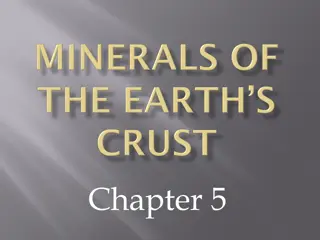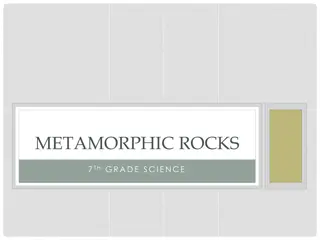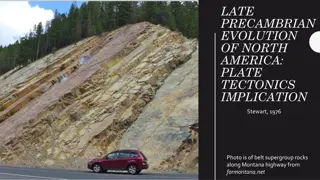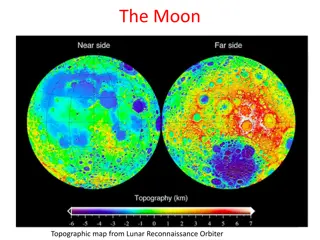Understanding Rocks: Composition, Importance, and Role in Earth's Evolution
Rocks, composed of various minerals, form the materials of the earth's crust. They play a crucial role in shaping erosion patterns and landforms, with their composition influencing the landscape evolution over time. Rocks are key in dating earth's history and understanding geological processes. Explore the significance of rocks in the geological realm.
Download Presentation

Please find below an Image/Link to download the presentation.
The content on the website is provided AS IS for your information and personal use only. It may not be sold, licensed, or shared on other websites without obtaining consent from the author. Download presentation by click this link. If you encounter any issues during the download, it is possible that the publisher has removed the file from their server.
E N D
Presentation Transcript
Rocks The materials of the crust or lithosphere are generally called as rocks. The word lithosphere, in fact, means rocksphere as the literal meaning of lithos is rock. The whole earth consist of eight most abundant elements (iron (35%), oxygen(30%),silicon(15%), magnesium(13%), nickel(2.4%), sulphur(1.9%), calcium(1.1%) and ammonium(1.1), constitute 99 per cent of the total mass of the earth where as only four elements (iron, oxygen, silicon and magnesium) account for 90 percent of total mass of the earth. On the other hand, the eight most abundant elements which constitute 99 per cent of total mass of the crust are oxygen(46%), silicon(28%), aluminium(8%), iron(6%), magnesium(4%), calcium(2.4%), potassium(2.3%) and sodium2.1%).
More than one elements of the earths crust are organized to form compounds which are known as minerals and minerals are organized to form rocks. The most important minerals groups are found in rocks are silicate, carbonates, sulphides, metal oxides etc.
Characteristics of rocks Rocks, thus, representing the geomaterials of the earth s crust, are composed of two or more minerals. Rocks play very important role in determining the characteristic features of several types of erosional landforms because the nature and magnitude of erosion largely depends upon the structure and composition of rocks. The fundamental dictum of famous American geomorphologist W.M. Davis that the landscape is a function of structure, process and time lays more emphasis on the dominant role of rocks in the evolution of landforms. Rocks are also very helpful in dating the age of the earth as rocks are the books of earth history and fossils are the pages.
